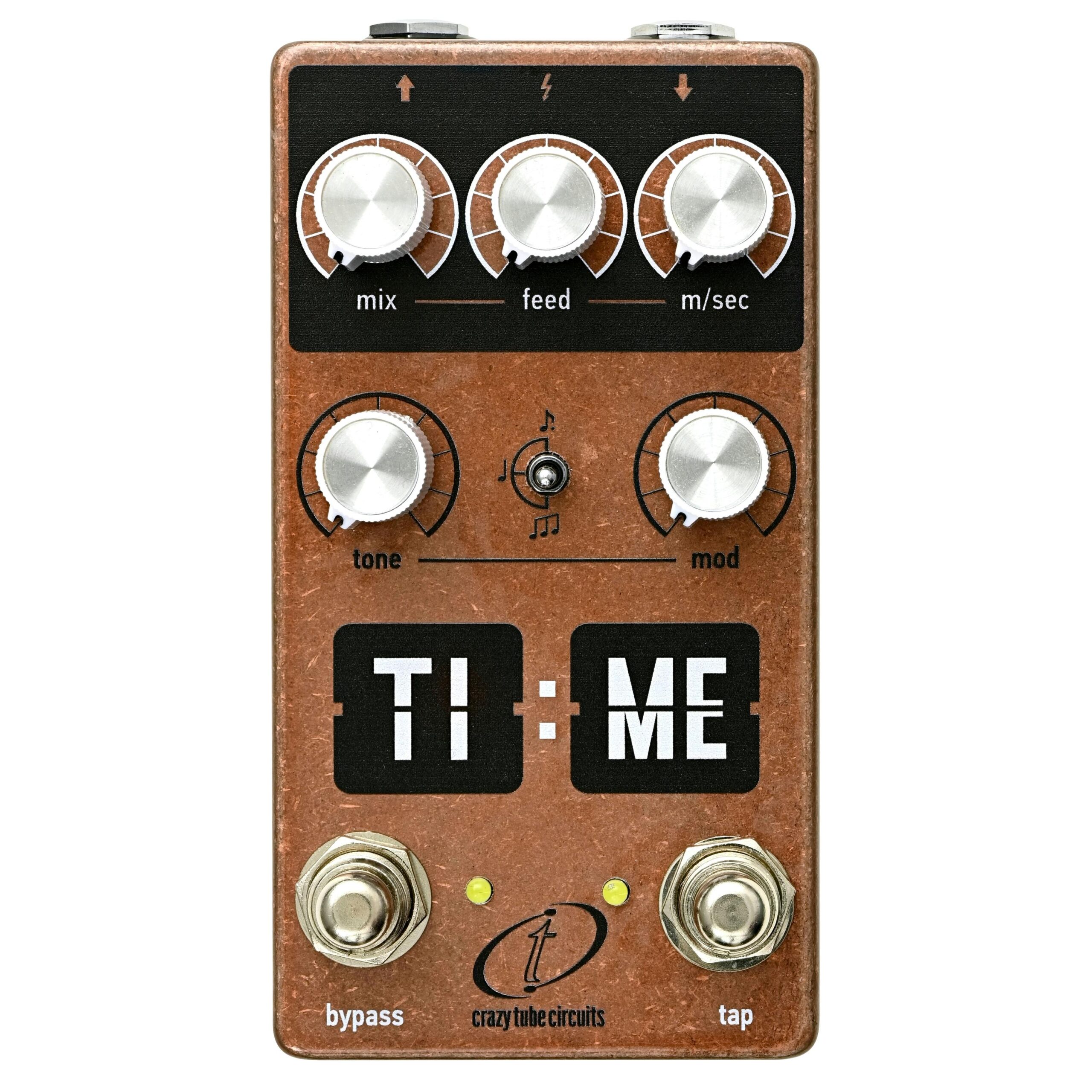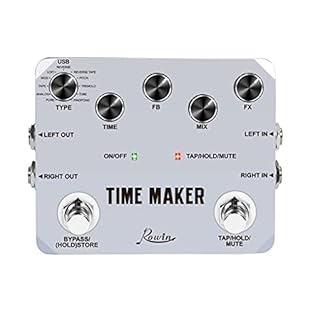Crazy Tube Circuits is a boutique pedal manufacturer based in Athens, Greece, known for its handcrafted effects pedals designed to deliver classic and modern tones with a unique twist. Founded by Christos Ntaifotis in 2009, Crazy Tube Circuits has gained recognition for its commitment to quality, innovation, and attention to detail.
One of Crazy Tube Circuits’ standout pedals is the Time Delay, a tape echo-inspired delay pedal that offers warm, vintage-style delay tones with modern features and flexibility. The Time Delay pedal includes controls for delay time, feedback, and modulation, allowing musicians to dial in a wide range of delay effects, from subtle ambiance to lush, modulated repeats.
In addition to the Time Delay, Crazy Tube Circuits offers a variety of other effects pedals, including overdrive, distortion, fuzz, modulation, and reverb pedals. Each pedal is handcrafted using high-quality components and features unique circuit designs, ensuring exceptional sound quality and reliability.
Crazy Tube Circuits pedals are highly regarded by musicians and enthusiasts for their versatility, tone quality, and distinctive aesthetic. With their dedication to craftsmanship and innovation, Crazy Tube Circuits continues to push the boundaries of what is possible in the world of guitar effects pedals, inspiring musicians to explore new sonic territories.
Just Pedal Ingredients.
Circuits. Delay — A delay pedal records your signal and plays it back after a set time, creating echoes that can range from tight, slapback repeats to long, atmospheric trails. It’s one of the most versatile effects, used to thicken tones, add rhythmic depth, or build spacious, ambient layers. Analogue delays offer warm, decaying repeats that blend naturally with your tone, while digital units provide pristine echoes with precise control over time, feedback, and mix levels.
From classic rockabilly and tape-style echoes to modern looping and shimmer effects, delay pedals have become essential tools for shaping sound. They can make solos soar, rhythms pulse, or transform simple chord progressions into cinematic textures. Whether used subtly to add dimension or boldly to create soundscapes, a good delay pedal can completely redefine the feel and atmosphere of your music.. Digital. Pedal — Your pedal is like a signature dish for your sound — a flavour-packed creation that transforms the bland ingredients of your guitar into something unforgettable. Each one adds its own seasoning, texture, and heat, turning a simple meal into a feast of tone.
These tasty little boxes sit in a row, like plates on a buffet, letting you mix and match flavours as you play. With one tap of your foot, you can swap sweet for spicy, subtle for smoky, and serve up something completely new. From the comfort food of warm overdrive to the fiery kick of fuzz, from smooth jazz sauce to heavy-metal spice, pedals give players a full menu of options to express their taste. And just like with food — once you’ve tried one dish, you’ll want to sample them all.
Collecting, trading, and discovering new flavours soon becomes part of the joy of being a tone-loving gourmet geek with a guitar.. Time. Tube — Tube-sounding guitar effect pedals are celebrated for their ability to replicate the warm, rich, and dynamic tones associated with classic vacuum tube amplifiers.
These pedals emulate the natural harmonic distortion and compression produced by tube circuitry, which adds depth and character to the guitar’s sound. This results in a more organic and engaging tone with a pleasingly smooth overdrive that many musicians find desirable.
The warmth and complexity of tube emulation can enhance both subtle nuances and powerful lead tones, making it ideal for genres that favour vintage or classic sounds.
Tube-sounding pedals often provide greater responsiveness to playing dynamics, allowing for expressive performance variations based on how hard or softly you play.
This dynamic sensitivity ensures that the pedal’s effect adjusts naturally with your playing style, preserving the nuances of your technique. The harmonic richness and clarity achieved through these pedals offer a more detailed and full-bodied sound, which helps in achieving a distinctive tone that stands out in both live performances and studio recordings.
Despite the higher cost and occasional maintenance needs, the unique tonal qualities of tube-sounding pedals make them a favoured choice for guitarists seeking an authentic and versatile sound..








![[3x3 Modes for Versatile Effects]: >> 3 delay modes (Echo, Digital, Vintage) and 3 reverb modes (Hall, Room, Plate) provide 9 unique effect combinations. The DSP restores 6 classic dual-time-domain spatial effects for precise sound control [User-Defi...](https://m.media-amazon.com/images/I/41UTXSm8WjL._SL313_.jpg)